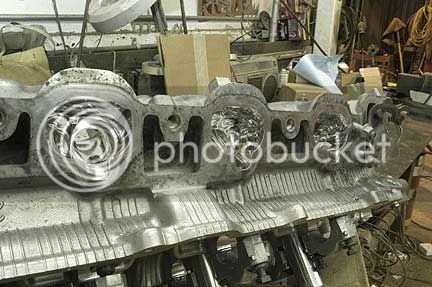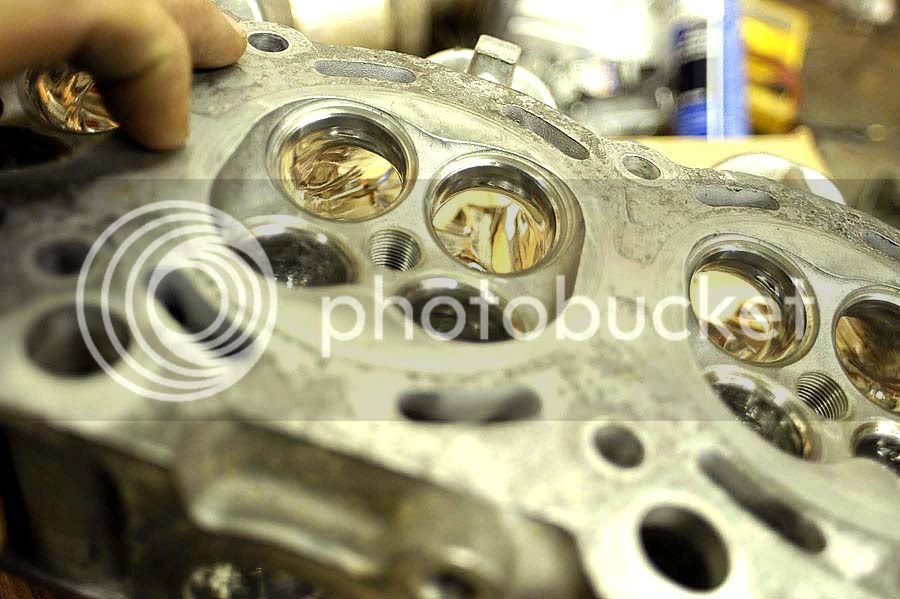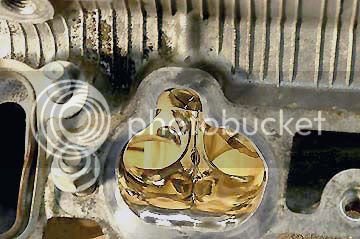its called creating a boundry layer effect (google it if you want more info
the dimples create a layer of air that effective supports the fuel suspention
this layer effectively creates a swirling effect much like standing on ball bearingss this prevents the fast moving flow from touching or been affected by the surface of the port
smaller ports make this effect more out pronounced as higher velocity makes the effect stronger
what i was taught
i come from a motrocycle backround and lernt my porting from 2 strokes while most will think this is erelevan some will understand the 2 strokes are more relyant or port effects that a 4 stroke ever will be
now from my experiance you want a 180 finish on any intake surfaces past the point of fuel suspention and a polished exhaust surface
why you ask
the exhaust is of a hot high pressure nature thus eliminating the effect know as laminar flow"plasma flow dynamics"
also the mirroe finish helps stop carbon forimg somthing that absorbs that presous exhaust energy that you then want to use to create a tuning effect
i.e headers or pluse tuning
now for intrest
someone here said that dividers are better not sharp
sory mate untrue
plane wings ane seup the way they are to creat lift i process of useing forward movement and energy to lift the aircraft
this uses resistace to creat a vacum above the wing thus creating lift
in laymans turms
a port divider on the other hand is a atempt to split the air without creating resistance(energy loss or heat or a reduction of velocity)
a plane wing uses resistance to create a effect with this energy
so tell me
why would you want to make any of that stored energy(portflow) into lift(resistance) ??
sorry i have not read the entire threed im sure some of you are on the right track but
all in all the only thing he has done wrong is polish the intake ports at the injection point the rest of his wok is quite spectacular and something to behold in both effort and patiance
so kudos to you now get out ya flapper whell and die grinder and roughen up those head inlet ports

v
crednials
motorcyle mechanic and race engine builder
fitter tuner welder /hydrolics
aircraft manufacture and part development (PAC NZ)
sorry for the shocking spelling its just my crappy typing and to be honest free advice is very rare nowdays !!!
v











